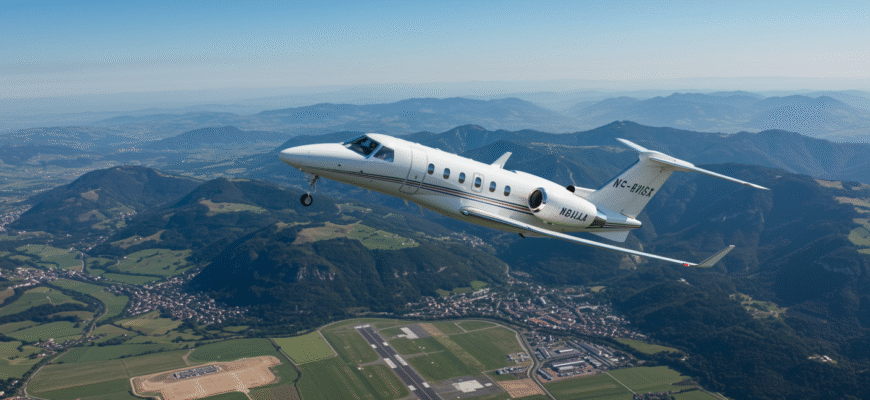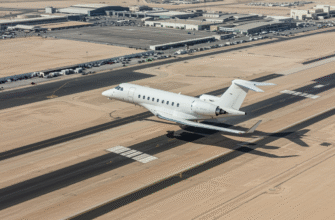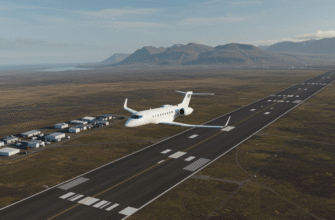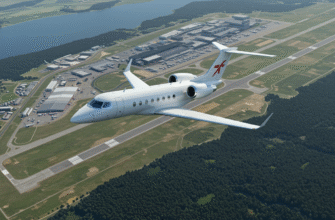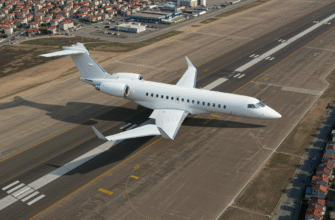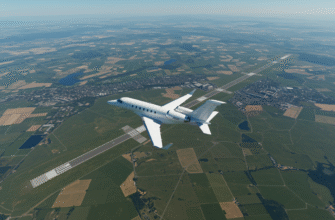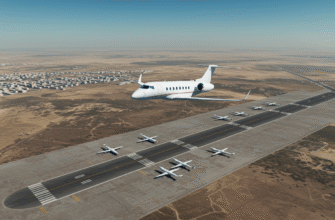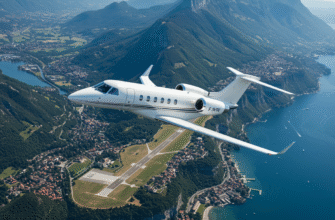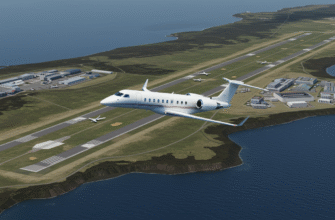Just twelve kilometers away from Geneva International, Annemasse Aerodrome (LFLI/QNJ) feels like a different planet. Pilots who’ve had their fill of velvet ropes, landing slots, and eye-watering fees at Geneva (LSGG) often find their way here, where it’s all about simplicity, speed, and community. The runway may be short, but the list of reasons people keep choosing it isn’t.
Fees? Lower, by a long stretch. Operations? Fast and flexible. On any weekday, a business jet escaping LSGG’s fee structure might taxi past a row of trainers buzzing in and out for flight school rotations. And weekends bring the soul of French GA to life: old aerobatic warhorses, families fueling up for Alps fly-outs, and café conversations starting with “Remember that crosswind last March?”
This isn’t some sleepy outpost. It’s a backyard-field-meets-borderland-hub that blends grit, culture, and function. Here, the fuel pumps rarely rest, the radios stay crackling, and nearly every hangar hides a story.
Shadow Of Geneva: Why Grassroots Flyers Choose Annemasse Over LSGG
LSGG may impress international travelers, but general aviation pilots almost roll their eyes at the mention. Landing at Geneva usually means mandatory handling services, steep fuel surcharges, pre-booked approach slots, and sometimes an extra layer of French-Swiss procedure slugfest if you’re doing anything sketchier than a smooth VFR.
Slide just over the border to Annemasse, and everything softens. It’s not just about escaping paperwork—though that’s a huge perk. It’s the vibe here that really pulls grassroots aviators in:
- Proximity: Still close enough to Geneva for a 20-minute Uber, yet out of its regulatory straitjacket.
- Affordability: Landing and parking fees slash a pilot’s bill to a fraction of Geneva’s.
- No Slot Drama: Forget about approach windows and scheduled handlers—you call, you come, you land.
- Real Pilot Community: The aero club dominates the field; you’re more likely to meet an instructor than an executive assistant.
The unscripted nature of flying here appeals to those who want less broadcast and more backchannel. For some, it’s a tax-dodge; for others, it’s a nostalgic nod to when flying didn’t involve key cards and ramp marshals.
The Heartbeat Of Gritty GA Culture
On the ramp, you don’t hear jet exhaust. You smell Avgas. And if you’re lucky—or unlucky, depending who’s flying—you hear the roar of an old taildragger pulling loops over the foothills. The buzz here isn’t manufactured. It’s mechanical and human.
There’s no VIP lounge, but the aero club kitchen pumps out espresso and jokes that haven’t aged well. Weekend flyers treat this field like their garage—some wrenching, others brushing snow off the wings, and a few just swapping “almost bent it” tales from landings gone just slightly rogue.
It’s common to see:
| Scene | What’s Happening |
|---|---|
| Flight Line | Trainers from the two local schools lined up, churning through crosswind touch-and-gos |
| Taxiways | Civic trainers dodging the occasional medevac Super Puma sweeping in unannounced |
| Hangar Coffee Tables | Pilots talking flap extensions, blown tire stories, and last weekend’s autorotation drills |
| Skyline | Legacy aerobats tracing smoke trails over the French-Swiss border before joining base |
These aren’t YouTubers flying for likes. These are lifers—people who’ve logged hours in fields like this and still check weather with their eyes and not just their apps.
Who’s Landing And Why?
Not everyone coming into Annemasse is here to sip hangar coffee. Behind the scenes, this modest field punches well above its weight.
Bizjets occasionally swing in—but never anything big. A surprising number use it as a workaround when Geneva makes things too expensive or bureaucratic. If a CEO’s flying in from Milan and doesn’t mind a quick car ride, LFLI becomes plan B (and for their finance team… plan A).
Medevac helicopters? Big part of the field’s real-world presence. Cross-border emergencies sometimes can’t afford the time or diplomacy of inbound at Geneva, so Annemasse gets the nod. No-frills, low-altitude, fast response.
Then there are the fly-in nomads:
- Swiss pilots heading to a cheaper fuel stop for an hour-long round trip
- French aero clubs hopping between fields to keep dual-cert students on their toes
- Alpine adventurers heading north for wine, snow, or a moment by Lake Geneva
It’s not that Annemasse is a secret. It’s that it doesn’t need to cash in on exposure. Pilots know where to look when they want less friction and more flight time. And in that way, it functions more like an insider’s club than an airport.
Getting Under The Skin: Infrastructure And Airport Layout
Pull back the curtain on Annemasse, and things get interesting—not shiny, but definitely customized for its audience. The field has one runway. No frills. No room to fake anything. Orientation is 12/30, stretching 1300 meters by 30 wide. That’s around 4,265 feet in American terms. Not short, but just tight enough to demand smart landing decisions, especially in winter or on a full load.
The approach is strictly VFR. No ILS, no RNAV—look out the window, match the slope, feel your sink rate. Prevailing crosswinds from the Alps can hit oddly, turning standard patterns into math quizzes for even seasoned flyers. Add in training traffic, the occasional jump in local pressure gradients, and pop-up clubs in the pattern, and every leg can feel like your checkride.
There’s one AFIS position instead of full ATC—Annemasse Info. You don’t get clearance; you coordinate. It’s a first-name-basis frequency where traffic works itself out mid-air. The low-intensity lighting system makes it clear: this is not a night ops airport. Local curfews keep late arrivals grounded, and if you push after hours, the neighbors will call.
Hangars vary: one for legacy maintenance shops. One is packed with flight school trainers. Others hide rebuilt vintage machines and planes with paperwork in five different languages. The self-serve fuel setup works most of the time—unless someone left their charge card inside a jacket they tossed behind a seat.
Out on the ramp, there’s no shortage of randomness. Someone’s Suzuki Swift weaving through the tails of Piper Archers looking for a tug. A spooked German shepherd bolting under a Mooney. Kids in borrowed headsets chasing pigeons across the grass.
It sounds chaotic, and sometimes it is. But that chaos, layered under routine, is exactly what makes Annemasse matter. It’s flying, the way it used to be.
Local Rules and Political Threads: Flying in French-Swiss Airspace
Crossing invisible lines in the sky sounds simple…until it’s not. Right on the edge of France but shading into Geneva’s outer airspace lies Annemasse Aerodrome (LFLI/QNJ)—a quiet havin for pilots who like to keep things basic, but legal. Until you climb out over the border, that is.
1. Navigating Cross-Border Rules
Once your nose points east, you’re in the Swiss-controlled sky. That usually means new squawk codes from Geneva Information and the unspoken Vegas rule of altitude: what works in France might rattle Swiss radar.
Pilots whisper about “sneaking” through VFR corridors to avoid unnecessary reroutes. It’s not illegal—just…sensitive. Transponder discipline is a must. So is knowing your border checkpoints, as Geneva isn’t thrilled when planes pop up uncalled.
Altitude tricks? There’s the usual: stay low under controlled zones, or go high and request Class D entry, all depending on what Geneva ATC is juggling that hour.
2. Customs “On Request”: Legal Loopholes?
Annemasse technically has customs—just don’t expect a formal welcome mat. It’s only available “on request,” which has led to some gray area stories. Pilots coming from outside Schengen would stop here, radio ahead, report their stuff—and get met by a sleepy gendarme or no one at all.
Some got searched to the rivets. Others flashed a flight plan, smiled, and taxied out. One tale involves a flight from North Africa landing here eyebrows-raised, only to be asked, “You sure this is your port of entry?”
Short answer—it shouldn’t be. But it sometimes plays that role when the paperwork walks faster than the actual process.
3. Parking Roulette and Operating Hours
There’s no reservation slot system at Annemasse, which sounds freeing but comes with its own dice roll. Parking can fill up without warning—especially when the local flying school is running loops or cross-border flyers are hiding from Geneva fees.
- Gate access often needs a code—don’t assume it’s open-air casual just because it looks like it.
- No extended hours unless you’re pre-arranged. The lights are low, the locks real, and your exit plan should not include jiggling a latch after 8 PM.
- Security is light, unless you count the random airport dog who might be the only soul watching your aircraft overnight.
4. Local DGAC Humor and Bureaucratic “Charm”
If you think small airport = less paperwork, France says non. Pilots often juggle three copies of everything—one for the aero club, one for the airport, one for vibes.
One trick the local pros use? Tuning fuel receipts to match their logs perfectly. You’ll see them lining up at the pump, timing it to the minute for mid-flight tax claims.
Papier, partout. Still, the staff often has a dry wit about it, throwing comments like “If the weather doesn’t stop you, our forms might” with a small shrug and a coffee in hand. That’s love in French aviation language.
Weather and Altitude Attitude: Geography Meets Meteorology
1. Mistral to Mont Blanc – Microclimates You’ll Feel
Forget your weather apps—they don’t pick up on the mood swings here. This corner of Haute-Savoie flips from balmy to ballistic without text alerts.
Sudden gusts roll off Mont Blanc’s range like a slap. Orographic lift ruins clean approaches or gives you a sudden 300-foot boost you weren’t aiming for. Local instructors talk about “white-knuckle Wednesdays,” especially in spring. You’ll practice crosswind landings more than soft fields.
Fog? It sneaks through the valley without mercy. You’ll be staring through your windshield thinking, “Maybe I’m still in a cloud,” before realizing—it’s just the ground playing tricks.
2. Slippery Winters and Smoking Brakes
Winter gets personal here. Cold mornings freeze fuel vents. Engine starts can drag out longer than a French lunch.
Local tips include:
- Preheat or bring oil pan blankets—it’s not optional.
- Deice with care: there’s not always someone around, and windshield fluid won’t cut it.
- Brake lightly on icy ground—the roll-off can get spicy fast.
One mechanic joked they spend December to February just “keeping planes from dying in their sleep.” That sums it up.
Oddball Lore and Stories from the Field
1. Ghosts of Aerobats Past
In some hangars, you’ll see patches of torn aircraft fabric pinned on old board walls. Chalk marks on the floor map out where a Yak-52 blew a tire in ‘96. Those aren’t decorations—they’re memory holders. People flew hard here.
Old aerobats practiced in this valley air, and some never left. Not in a tragic way—more like their echo lingers anytime someone spins out of base too fast and hears an invisible voice say, “Try that again.”
2. The Geneva Bizjet Dodge
A favorite hustle? Light bizjets using Annemasse to skip Geneva’s stiff landing premiums.
They’ll:
- Land here, refuel for just the bare hop to LSGG
- Claim French departure for flight plan hush
- Keep fuel receipts tucked deep in logbooks
It’s a tight game, and a short runway for 5-ton metal doesn’t always leave room for error. But some do it, and some talk about it with a grin over espresso at the aero club.
Why Pilots Keep Coming Back
1. No-frills Freedom and Community
It isn’t about VIP lounges—it’s about a place that lets you wrench, refuel, and fly with barely a nod from headquarters.
No schedules. No handlers. Just buckets of oil, hangar talk, and names you see every weekend. The freedom makes it addictive. The people make it stick.
